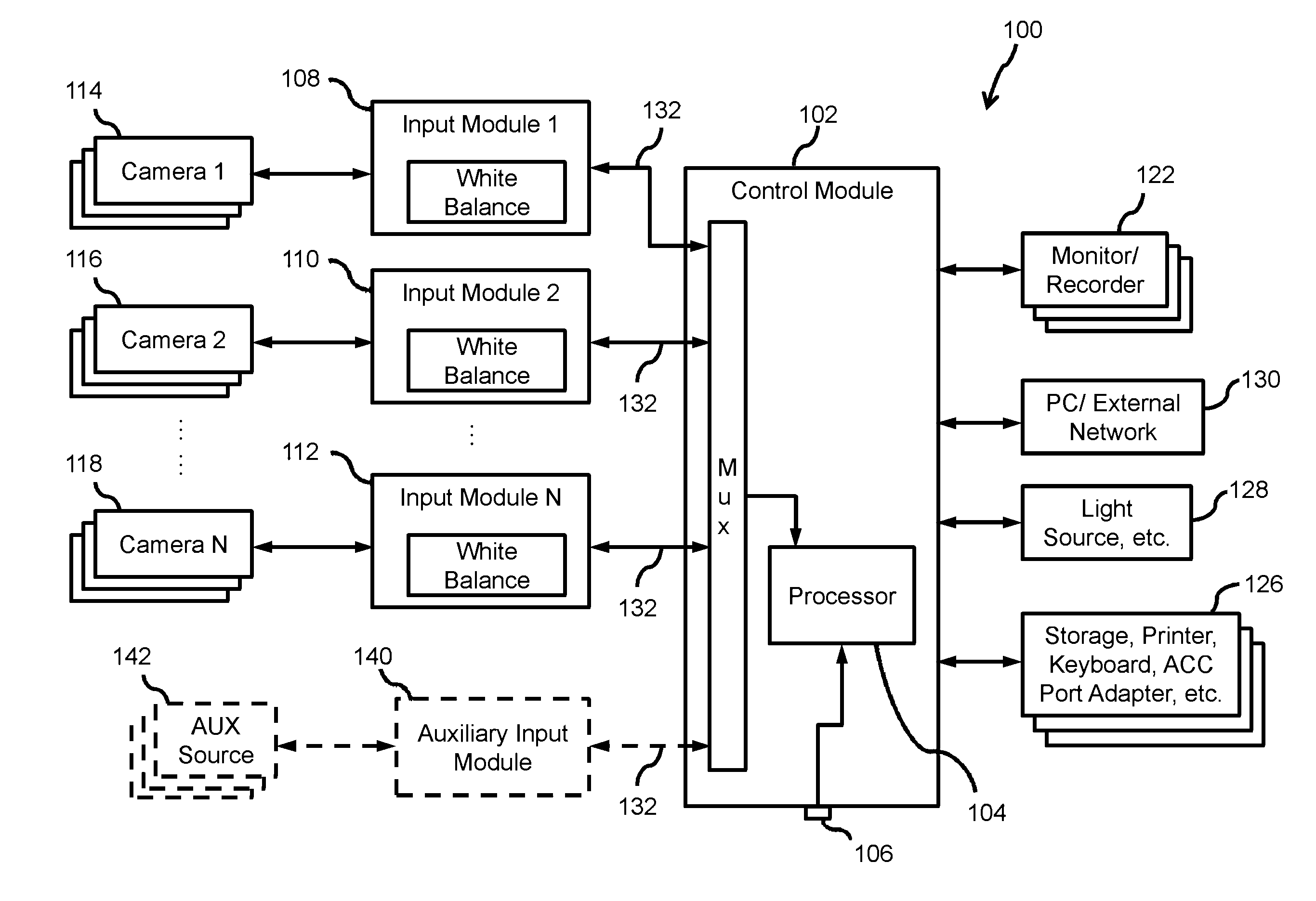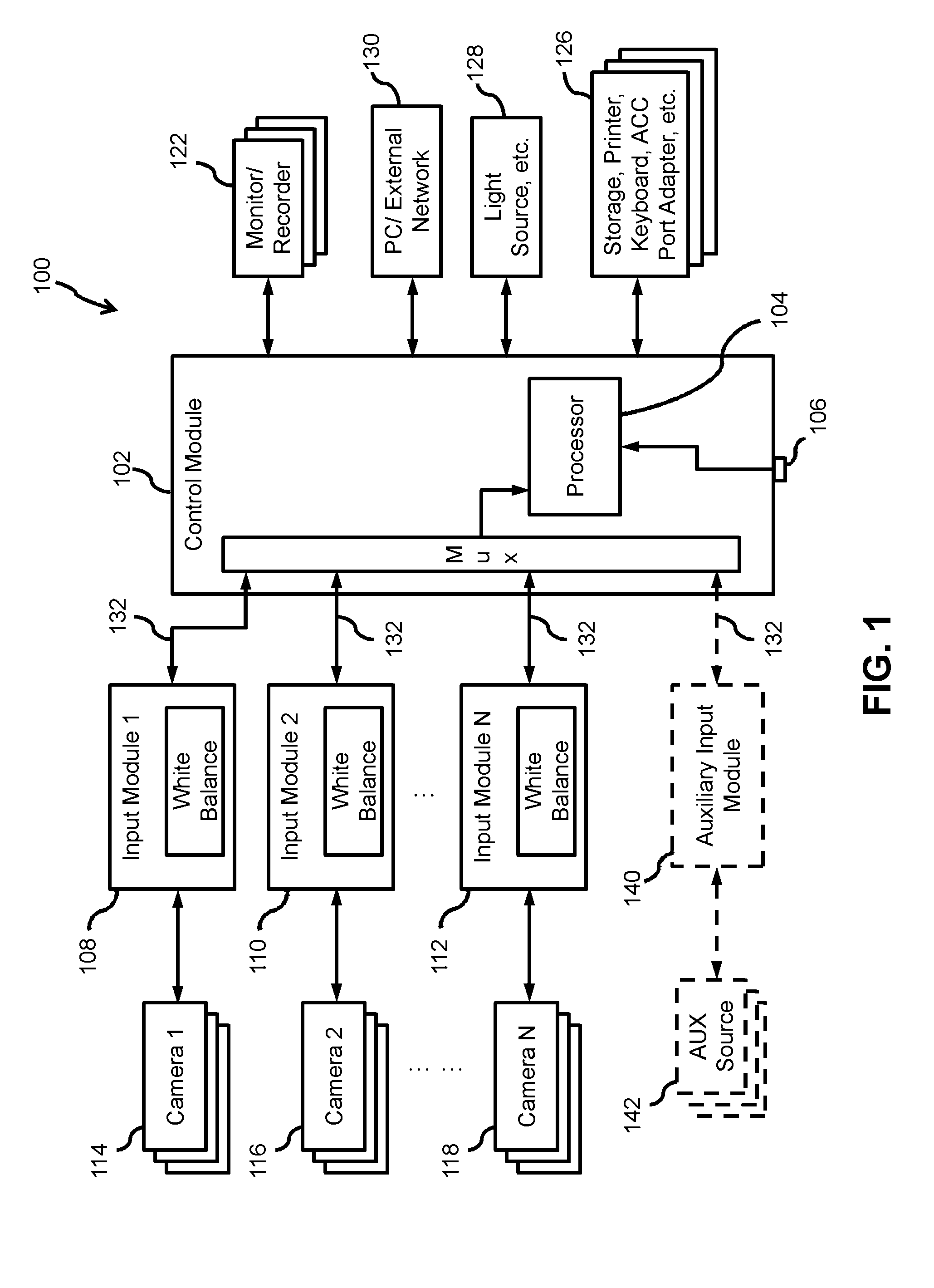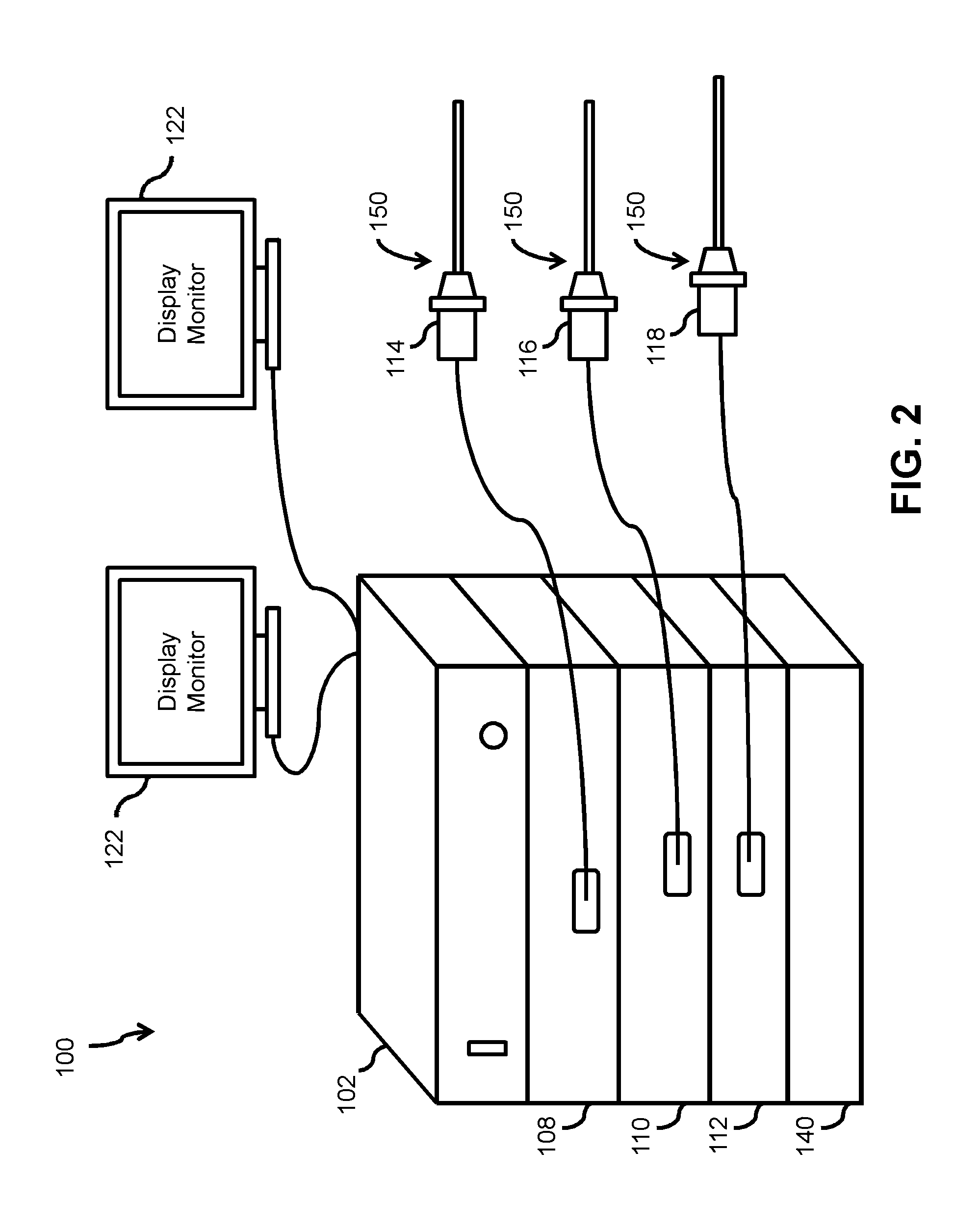Video Imaging System With Multiple Camera White Balance Capability
a video imaging system and white balance technology, applied in the field of video imaging systems, can solve the problems of large camera inventory, catastrophic, and the patient's consequences, and achieve the effect of efficient and reliable white balance correction and efficient white balance calibration
- Summary
- Abstract
- Description
- Claims
- Application Information
AI Technical Summary
Benefits of technology
Problems solved by technology
Method used
Image
Examples
Embodiment Construction
[0042]The following detailed description illustrates the invention by way of example, not by way of limitation of the principles of the invention.
[0043]As used herein, the terms “camera” and “camera heads” encompass all types of image and video capturing devices, including still cameras, video cameras, HD cameras, digital cameras, video endoscopes, and including imager architecture / design types such as CCD image sensors, and CMOS images sensors.
[0044]As used herein, the term “white balance calibration” encompasses (and is used interchangeably with) white balance compensation, color correction, color calibration, color balance calibration, and color balance compensation.
[0045]The present invention concerns an imaging system or image capturing system that is adapted to calibrate the white balance setting of one or more camera heads coupled to the system. More specifically, the image capturing system provides dual white balance compensation for multiple camera heads having multi-spectr...
PUM
 Login to View More
Login to View More Abstract
Description
Claims
Application Information
 Login to View More
Login to View More - R&D
- Intellectual Property
- Life Sciences
- Materials
- Tech Scout
- Unparalleled Data Quality
- Higher Quality Content
- 60% Fewer Hallucinations
Browse by: Latest US Patents, China's latest patents, Technical Efficacy Thesaurus, Application Domain, Technology Topic, Popular Technical Reports.
© 2025 PatSnap. All rights reserved.Legal|Privacy policy|Modern Slavery Act Transparency Statement|Sitemap|About US| Contact US: help@patsnap.com



